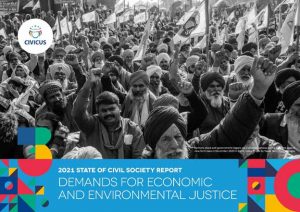September 4, 2018 SANDRP
The Ganga river basin’s importance is well acknowledged. The World Bank that is funding a currently ongoing USD 1 Billion project for Ganga Cleanup says in its Project Appraisal Document: It’s the most populous basin in the World.


About 50% of India’s poor are in the five states along the main stem of Ganga: Uttarakhand, Uttar Pradesh, Bihar, Jharkhand and W Bengal. The basin of the 2525 km long river spans four countries (China, Nepal, India, and Bangladesh) and 11 Indian states. More than 60 million people came to the Ganga river in the city of Allahabad for pilgrimage in January 2007 during Kumbh Mela, making it the largest gathering in the world.
It will again happen in January 2019. So what ails Ganga? Here is a quick laundry list: Urban and Industrial pollution, Catchment degradation, floodplain encroachment, unsustainable sand mining, dams, diversions and hydropower projects, biodiversity loss, deforestation, loss of local water bodies, unsustainable groundwater extraction, failure of pollution control mechanism, governance, climate change, all this affects not just the main stem, but most tributaries, the religion, embankments and floods, silt management, impact of Farakka, the mindset of water resources establishment. A mindset that does not really understand a river and sees it essentially as a water channel that can be endlessly dammed and exploited in the name of development. That sees the flowing river as a wasteful luxury. That mindset has resulted in new threats for the river: Waterways, dredging, river linking plan, and riverfront development. In Uttarakhand, in the name of Char Dham Yatra, lakhs of trees are being cut, fraudulent ways are used to escape scrutiny, all affecting the river in the name of religious tourism, not even asking who needs that all-weather road that looks more like an invitation to disaster. Each of them are pushed even without assessing the impact of these projects on the river and its health.
Most importantly, the whole catchment is in a continuous process of degradation, reducing its capacity to hold, store and recharge rainwater locally. But there is no attention of the state or the central governments to this or any effort to reverse that.
Even if it’s attractive to look at the water pollution problem and treat it in isolation, one cannot lose sight of the fact that all the problems plaguing the river are inter-related. As Bihar Chief Minister Nitish Kumar has been repeatedly saying, you cannot achieve Clean (nirmal) Ganga without ensuring year-round flow in the river (aviral) Ganga. Even on the issue of Ganga water quality, recent RTI revealed that the quality of Ganga has deteriorated in last four years, even at Varanasi.
History of Ganga cleaning efforts The following list mostly focusses on recent events and only mentions in passing earlier Ganga cleaning efforts.
• 1974 With the passage of Water Pollution Act by Parliament that paved the way for setting up of Central and state pollution control board and the whole institutional and legal infrastructure for addressing water pollution, it was expected that the state of pollution of our rivers, including Ganga, will improve. That did not happen.
• 1986 The then Prime Minister Rajiv Gandhi launched Ganga Action Plan, specifically to tackle the serious issue of pollution of Ganga majorly from Sewage and Industrial effluents. This then had more phases and was extended to other rivers.
• Nov 2008 A meeting called by the then Prime Minister decided to Declare Ganga as India’s National River.
• 2009 National Ganga River Basin Authority was set up through a notification in Feb 2009 under EPA, 1986.
• Aug 2011 National Mission for Clean Ganga (NMCG) was registered as a society on 12th August 2011 under the Societies Registration Act 1860. It acted as implementation arm of National Ganga River Basin Authority (NGRBA) which was constituted under the provisions of the Environment (Protection) Act (EPA), 1986.
• June 2014 The newly elected NDA the govt at the centre renamed Ministry of Water Resources as Ministry of Water Resources, River Development and Ganga Rejuvenation and all the work related to Ganga and other tributaries is transferred from Ministry of Environment and Forests to the new ministry and its charge is given to Sushree Uma Bharti, supposed to be committed to the cause of Ganga.
• The government, through an announcement in the Budget, launched Namami Gange Programme’. As NMCG says, “it is an Integrated Conservation Mission, approved as ‘Flagship Programme’ by the Union Government in June 2014 with a budget outlay of Rs. 20,000 Crore to accomplish the twin objectives of effective abatement of pollution, conservation and rejuvenation of National River Ganga.”
• MoWR says about the vision of its Namami Gange Program: “The Vision for Ganga Rejuvenation constitutes restoring the wholesomeness of the river defined in terms of ensuring “Aviral Dhara” (Continuous Flow”), “Nirmal Dhara”(“Unpolluted Flow”), Geologic and ecological integrity.”
• The website says its main components are: Sewage Treatment infrastructure, River Front Development, River Surface Cleaning, Biodiversity, Afforestation, Public Awareness, Industrial Pollution Monitoring, and Ganga Gram. Notable omission: No mention of Aviral Ganga, Ecological Integrity or Geological Integrity.
• 2015 A High-Level Task Force (HLTF) on Ganga was constituted on Ganga on 6 th Feb 2015 under the chairmanship of Cabinet Secretary to facilitate interaction among Ministries/ Departments and State Governments and to ensure effective coordination and implementation of the program. It had meetings on Feb 13, 2015, 5th May 2015, 3 rd July 2015.
• 2016: Government of India constituted Empowered Task Force (ETF) on river Ganga under the chairmanship of Union Minister for Water Resources, River Development and Ganga Rejuvenation consisting of Secretary of concerned Ministries and Chief Secretary of states and CEO, Niti Aayog.
• Sept 2016 The Govt press release dated 21.09.2016 about cabinet decision about the constitution of National Ganga Council (NGC) said: “Although, the NMCG has been functional as a registered Society since 2012 its role has been largely limited to fund the projects to implementing organisations. It neither had the mandate to take cognizance of various threats to river Ganga nor the powers to issue directions to the concerned authorities/polluters. While the organisation has been made responsible as custodian of river Ganga in both public eye as well as various courts, the mission is grossly ill-equipped to handle such expectations… It is expected that the move (constitution of NGC and Ganga notification) will ensure effective abatement of pollution and rejuvenation of the River Ganga; maintain ecological flows in the River; impose restrictions on polluting industries, and carry out inspections to ensure compliance. In addition, it is proposed to maintain and disseminate data and carry out research on the condition of the river.” There is no evidence to show any of these have been achieved.
• Oct 2016 National Council for Rejuvenation, Protection and Management of River Ganga (referred to as National Ganga Council) was constituted vide notification no. O. 3187(E) Dt. 7th October 2016 under EPA 1986, to replace NGRBA. The NGC is headed by the Prime Minister but has not had a single meeting since its constitution.
• Sept 2017 As a sign of failure in achieving any progress in Ganga rejuvenation, the portfolio of “Water Resources, River Development and Ganga Rejuvenation” was taken away from a reluctant Sushree Uma Bharti and given as an additional portfolio to Nitin Gadkari, who was already holding charges of other ministries, including Waterways, which was clearly in conflict with the Ganga Rejuvenation.
In next part, we see what the different official agencies have to say about what has been achieved so far by various efforts at rejuvenating Ganga in terms of impact on Ganga.
Himanshu Thakkar (ht.sandrp@gmail.com)




